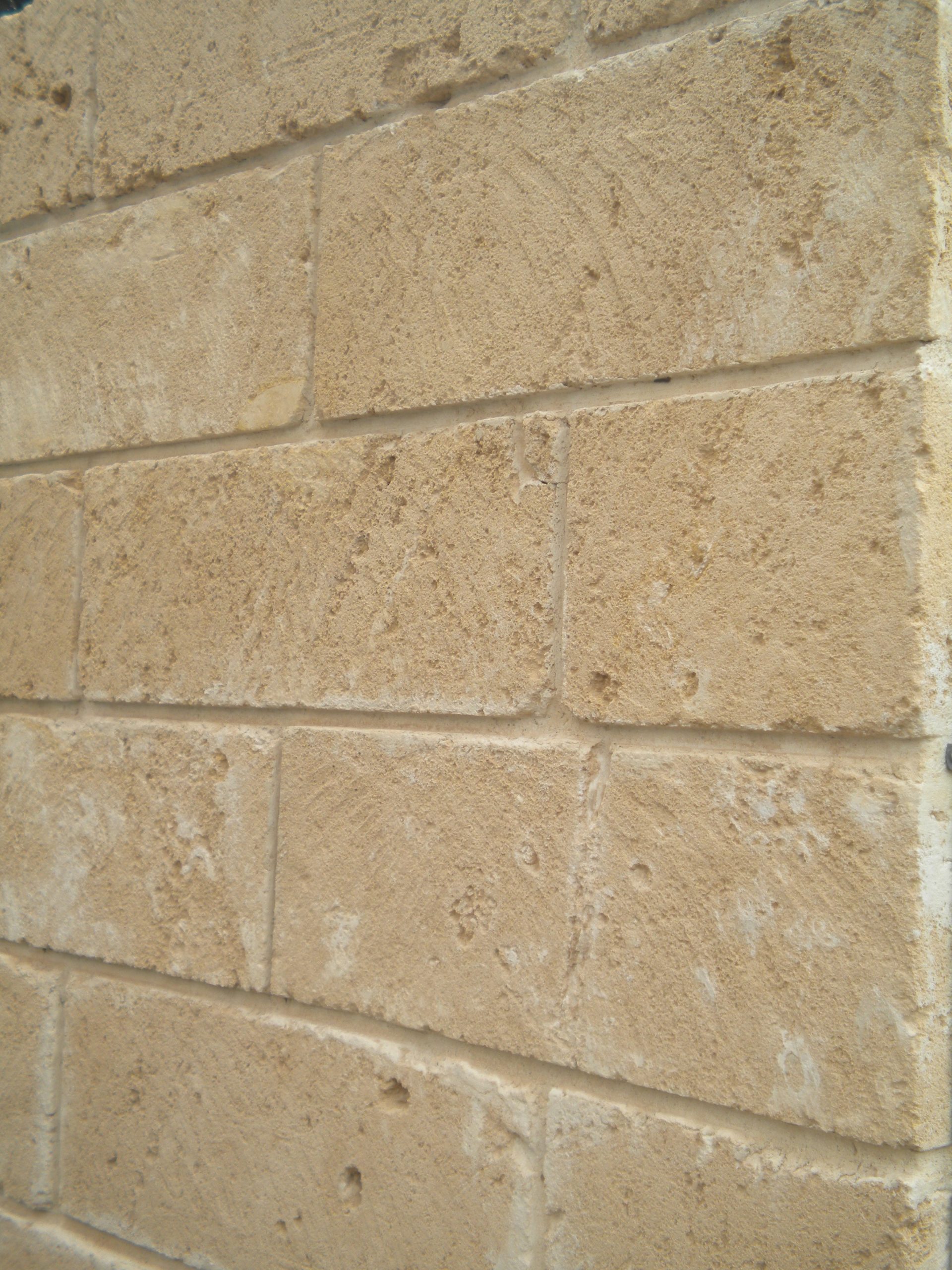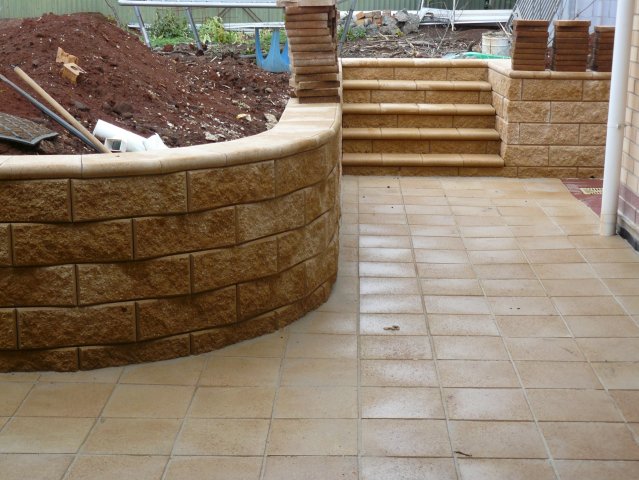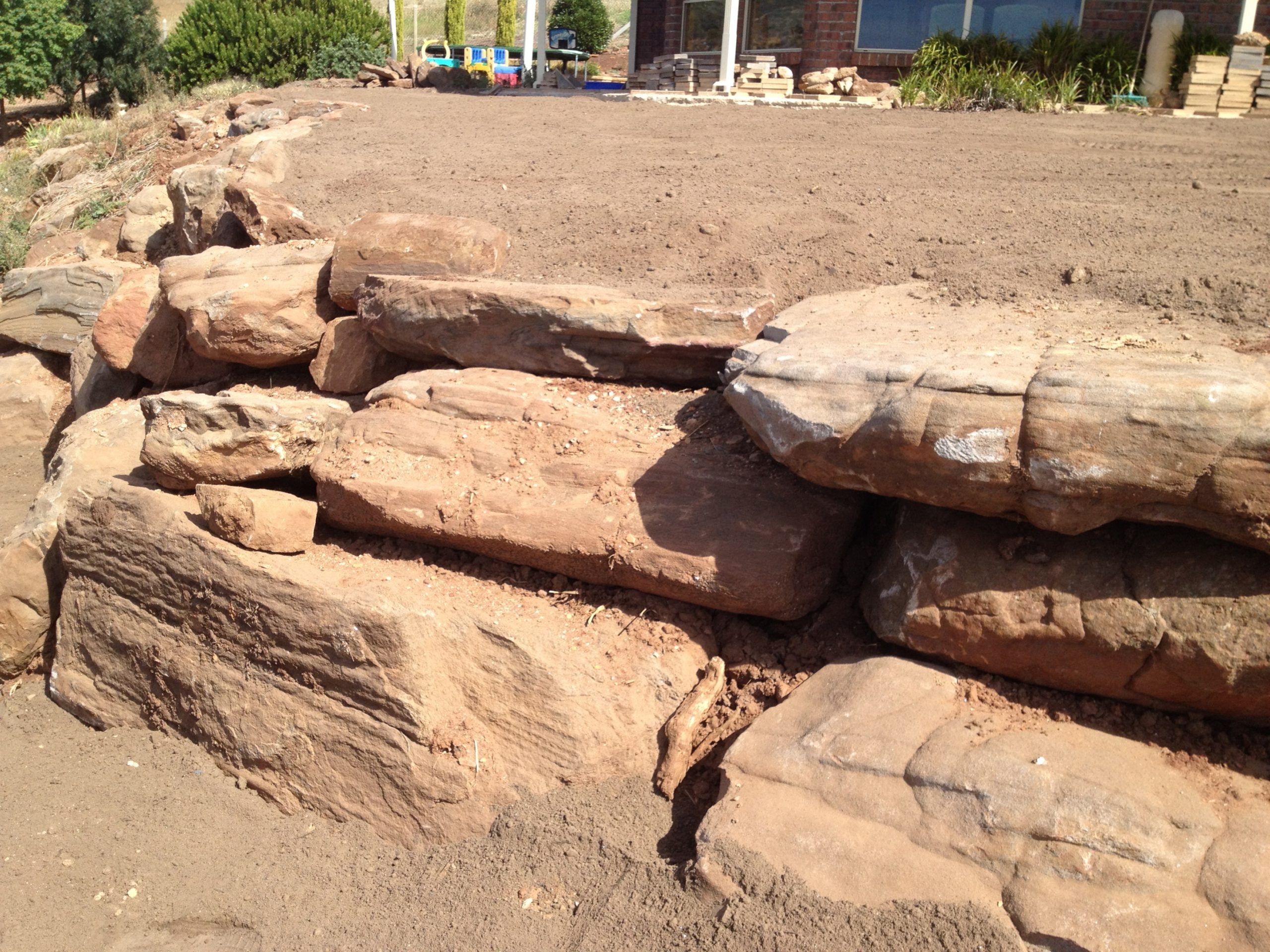All Retaining Walls Adelaide
Call Andrew now: 0421993455 for Retaining Walls in Adelaide
No job is too big or too small. All Retaining Walls are happy to quote on anything in and around Adelaide, from a small garden bed retaining wall to large scale commercial retaining and landscaping work, throughout the Adelaide and Outer Adelaide areas.
Andrew Scarfe has been building retaining walls of all types for many years and has been featured in the Adelaide Advertiser in articles about Retaining Walls in Adelaide.
With experience in all types of retaining walls, including concrete sleeper walls, block walls, curved retainer walls, bluestone retaining walls, retaining walls on property boundaries, retaining walls with addiitonal fencing above, gabion retaining walls, tiered retaining walls for steeply sloped blocks, and retaining walls in areas with tight or difficult access, Andrew's knowledge of retaining wall building is extensive. If you need a low cost retaining wall or a feature garden retaining wall, he can build your wall with the right quality materials to ensure that it lasts for years. All Retaining Walls only use quality materials as required by the building code, and will install proper drainage, to ensure your retaining wall lasts.
All retaining wall building is done in-house by skilled tradesmen with many years of experience in all areas of Adelaide.We can do the complete construction, including design, costings, materials sourcing and retaining wall construction.
Difficult site access is our specialty, with equipment and experience to handle difficult situations incluidng narrow or steep access.
For more pictures of completed jobs around Adelaide, please see our gallery pages.
Concrete Sleeper Retaining Walls use a steel beam set into a concrete pier with the concrete panels slipped in between the I beams. They are ideal for use where high strength is required and there isn't much space.
These are usually one of the most cost effective and the most commonly used retaining wall.
The drawback of this style is that it can be difficult to install in areas with hard rock, and other styles of wall may be a better choice in that situation.
Concrete Sleeper Retaining Walls are frequently wrongly built with incorrect alignment on the boundary line causing encroachment and issues with neighbours. Correct installation is critical for legal compliance.
We only use steel that is galvanised for superior rust protection. Painted or ungalvanised steel is not recommended because you can't repaint the back of the wall once it's built and the serviceability of the coating cannot be maintained correctly once the wall is built, leading to early failure of the wall.
Generally, the piers go below the ground for the same distance as the wall is high, but in some instances must go much deeper.
We can supply plain concrete, coloured concrete, patterned and textured concrete sleepers for a variety of looks.
Concrete sleeper retainer walls are the most commonly built style of retaining wall but modern choices in panel finish now give stylish choices that were previously not available.

Keystone Blocks are normally used for larger commercial installations, however with tighter access and sloping blocks these are a great alteranative to other methods, these walls are typically 2 to 14 metres in height.
Keystone Blocks are especially good for difficult access sites, including narrow access and sloping sites.
Keystone Blocks create a stylish finish and can incorporate curves and level changes that can't be achieved with Sleeper Retaining Walls. Keystone Blocks are available in both light and dark colours.
When incorporated with soil reinforcements such as geogrids or no fines concrete backfill, Keystone Block Retaining Walls can be built to much higher heights (up to 14 meters tall).
Keystone Block Retaining Wall installation results in a thick retaining wall that requires a wider footprint than say a concrete sleeper wall.

Segmental Blocks, also known as Dry Stacked Retaining Walls, are good for tight access situations as they can be installed without the need for large heavy machinery onsite.
Segmental blocks are also a good choice for sloping sites.
This retaining wall style comes in a good range of styles and colours, and many brands of segmental blocks have complimentary products available in the range, such as bullnose caps and wide flat pavers that can be used to create steps, benches and seats, making this a very popular choice for stylish garden landscaping of multiple matching features.
Segmental blocks are good for garden edges, garden walls, and
lower height walls up to 1.2 meters. The height of the wall that can be achieved depends on the type of block and the engineering required for your specific site.
Segmental blocks provide design options not available with concrete sleepers, such as curved walls, or walls with bends, walls with sharp angles, or a series of walls with varying heights. Segmental blocks provide a superior design outcome with steps, curves, and multiple changes of height and direction.



Gabion Basket Retaining Walls use wire cages which are interlocked together and filled with smaller rock, so that they can retain large areas and still allow drainage.
This type of construction has a high life expectancy. There are multiple types of Gabion Baskets available, the most durable are the plastic coated wire baskets which have a life expectancy of 120 years.
The gabion baskets can be filled with any type of rock, or any type of material which gives the weight - for example, bricks, small pieces of concrete, etc.
Baskets can be cut and shaped to fill unusual sized spaces.
The baskets, when all tied together are very strong and flexibile, which allows for ground movement. Gabion Basket Retaining Walls can be assembled in more difficult to access locations.
The type of stone used will affect the cost of this type of wall. Also affecting cost is the finished look, whether a neatly hand-stacked effect is required, or a mass filled wall for purely functional purposes.
Concrete blocks use the sheer weight of the large concrete blocks to do the retaining. A Large Gravity Concrete Block Retaining Wall requires heavy machinery and good site access to be able to construct due to the weight of the materials.
Generally, Masonry Retaining Walls have a concrete footing with blocks that are assembled with reinforcing bars up through them, and then concrete core filled.
Masonry Retaining Walls are used for strength, can be built to high heights and can hold structures on top as they are very strong. Masonry Retaining Walls have more solid construction than a concrete sleeper wall.
Masonry Retaining Walls have a wide footprint at the base (a heel or a toe footing) and can be built on the boundary line.
Masonry Retainer Walls are usually a mid to higher priced option, depending on the site preparation and height.
A Masonry Retaining Wall has a smooth brick finish where the joint lines don't show. They are available in a range of colours.
Now mortarless systems are available also, with interlocking blocks, which are concrete core filled.

Crib Retaining Walls are a construction method which combines interlocking concrete or wood beams which are then filled with stone. This provides a large gravity wall which is free draining and quite often used on large commercial projects and along roads. They can also be used in residential applications.
The main usage of Crib Walls tends to be in big open areas or very tall walls.
These walls are built with an incline back into the embankment.
Crib Retainer Walls can be good for difficult sites, allowing for retaining quite high heights with relatively shallow footings due to the lean back of the wall.
Crib Retaining Walls are free draining, so good for sites where drainage is important.

Generally, Stone and Moss Rock Retaining Walls are the cheapest way of retaining.
Often these types of walls require a lot of maintenance and weed control between the rocks once they have been constructed.
Stone and Moss Rock Retaining Walls may not completely stop soil washing down under heavy rainfall.
They have no restrictions on height, but requiresa wider footprint the higher you go.
This style of wall can look great for gardens as part of the landscape design.
Stone and Moss Rock Retainer Walls are not as strong or durable as an engineered type wall, where water and other external factors are encountered.
Moss Rock and Stone Walls create a more natural landscape, so are popular with gardeners, and can encourage wildlife in the garden.
The advantage of Poured Concrete Retaining Walls is that they can be done onsite, to fit an unusual or detailed site requirement.
They are particularly good for walls with many changes of heights or unusual angles.
Poured Concrete Retaining Walls are a high strength option
and concrete can be pumped into places inaccessible for other building and construction types.
Poured Concrete Walls come in a variety of colours.
The cost of these walls varies depending on the amount of preparation required, sometimes they can be a very cost effective option, depending on the site and size of wall required.










